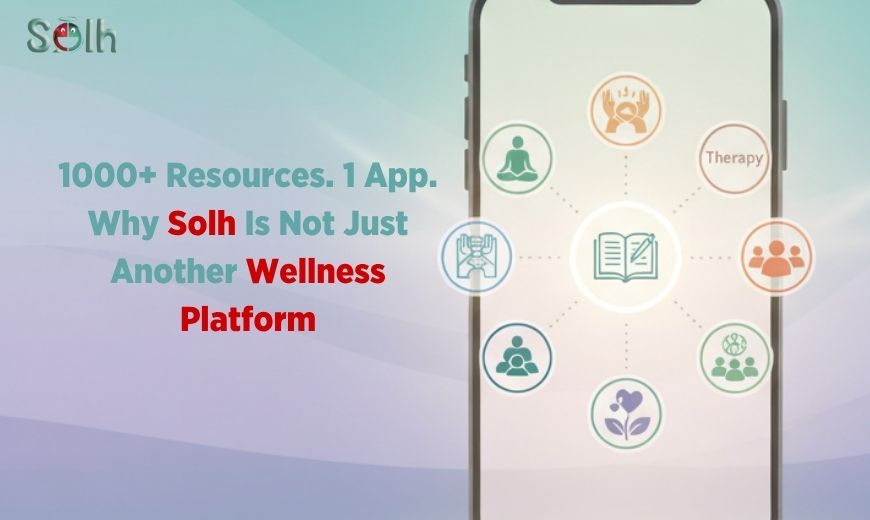Quick Summary
Most corporate wellness programs fail because they’re built on sentiment, not science.
While organizations track every business metric—revenue, retention, engagement—they still ignore the one variable that drives them all: stress.
With AI tools like Streffie, leaders can now measure stress as a tangible, physiological data point—turning well-being from a moral gesture into a measurable workplace stress management strategy.
Why Measurable Stress Is the Future of Wellbeing
Workplace wellbeing has long been driven by guesswork.
Surveys. Sentiments. Vibes.
But guesswork doesn’t prevent burnout.
It just delays accountability.
Measurable stress means converting emotional and biological signals into objective data—using AI stress management tools, biomarkers, and real-time analytics.
This isn’t about invading privacy. It’s about ending ignorance.
Because if stress fuels 80% of workplace breakdowns, then not measuring it is like running a hospital without thermometers.
Why Measuring Stress Matters for Organizations
1. It Predicts Burnout Before It Happens
Research shows chronic stress precedes burnout by up to 6 months.
Real-time tracking lets HR intervene before resignation letters arrive.
2. It Protects Retention
Teams that monitor stress show up to 40% lower attrition, because prevention always costs less than replacement.
3. It Enhances Cognitive Performance
Employees with regulated stress levels demonstrate 2x higher focus and problem-solving capacity.
4. It Builds Sustainable Culture
A calm organization is not a slow one—it’s a stable one.
Workplace stress management creates emotional visibility and trust.
Simply put: what you measure, you manage.
What you ignore, you lose.
What Happens When Stress Isn’t Measured
Workplaces that don’t track stress end up mistaking exhaustion for efficiency.
The decay is slow, silent, and systemic:
Deadlines get met, but creativity dies.
Productivity looks high, but morale quietly collapses.
Meetings become shorter—but colder.
Employees stop quitting loudly. They just disengage quietly.
That’s how burnout wins — in silence, not chaos.
How AI Is Turning Stress into Data (The Streffie Model)
The future of wellbeing isn’t emotional. It’s empirical.
At Solh Wellness, that shift begins with Streffie—an AI-powered stress management program that reads stress like a biometric, not a behavior.
| Feature | What It Does | Why It Matters |
|---|---|---|
| Facial Biomarker Analysis | Maps 68 facial points to detect stress, fatigue, and anxiety. | Removes bias from self-reporting. |
| Smart AI Dashboard | Converts raw signals into stress insights at team, department, and organization levels. | Turns emotion into actionable intelligence. |
| Streffie Kiosk | On-site stress scan for employees; integrates with Solh systems. | Makes daily wellbeing measurable, not anecdotal. |
| Aggregated Analytics | Trend analysis of collective stress levels. | Enables preventive interventions, not reactive damage control. |
With Streffie, stress becomes a measurable metric — something leaders can read, track, and manage like revenue.
This transforms wellbeing into a sustainable corporate wellness platform that drives both human and business growth.
The Root Cause of Corporate Burnout
The problem isn’t overwork.
It’s emotional blindness.
Organizations worship data in every domain—except wellbeing.
They have dashboards for sales, performance, and profit.
But when it comes to the human nervous system, they rely on assumptions and quarterly surveys.
That’s not culture.
That’s negligence in a suit.
How to Integrate Measurable Stress into Workplace Wellbeing
Install AI Stress Measurement Systems
Tools like Streffie Kiosks or facial stress scans capture real-time physiological data.
Integrate Smart Dashboards
Pair wellbeing metrics (fatigue, mood, recovery rate) with traditional KPIs (performance, attrition).
Train Leadership in Stress Literacy
Teach managers to understand stress signals and nervous-system regulation.
Replace Awareness Weeks with Data Cycles
Wellness isn’t an event; it’s an ongoing feedback loop powered by AI.
Act on Insights, Not Intentions
Data is useless without accountability. Convert stress analytics into team-level wellness action plans for stronger organisational stress management.
The Business ROI of Measurable Stress
30% improvement in team focus and creativity.
Up to 40% reduction in attrition through predictive stress mapping.
50–60% fewer burnout cases over 12 months in data-driven wellbeing cultures.
Stronger employer brand — because real wellbeing is measurable, not marketable.
When stress becomes a KPI, workplace stress management becomes a business advantage.
What Industry Leaders Are Saying Online
HR professionals on LinkedIn admit:
“We talk about culture. AI actually measures it.”
Managers confess:
“I didn’t realize how stressed my team was — until I saw the dashboard.”
The message is universal:
You can’t fix what you refuse to see.
And for too long, workplaces have chosen ignorance over insight.
FAQ
Q1. What does measurable stress mean in workplace wellbeing?
It refers to tracking physiological and behavioral stress indicators using AI, facial biomarker tools, or HRV analytics to quantify emotional health for effective workplace stress management.
Q2. How does Streffie measure stress?
Streffie scans facial micro-expressions through 68 biometric points to detect stress levels in real time, translating them into actionable dashboards for leaders.
Q3. Is stress measurement invasive?
No. Ethical AI systems like Streffie ensure full privacy and anonymized data. The goal is awareness, not surveillance.
Q4. How can companies start implementing measurable stress systems?
Begin with pilot programs—Streffie kiosks or mobile scans—integrated into HR dashboards. Then, build organizational policies around real-time stress insights.
Q5. What’s the ROI of AI-driven wellbeing programs?
Companies report 20–40% higher engagement, reduced absenteeism, and measurable declines in burnout within the first year.
The Core Insight
Workplace wellbeing isn’t about yoga mats or inspirational posters.
It’s about data.
Because you can’t heal what you refuse to measure.
The future belongs to organizations that treat stress as a KPI, not a conversation.
AI tools like Streffie aren’t replacing HR — they’re revealing reality.
A calm workplace isn’t a lucky one.
It’s a measured one.
Truth Shot
The future of workplace stress management isn’t emotional—it’s measurable.
And leaders who don’t track stress aren’t managing people.
They’re managing denial.



